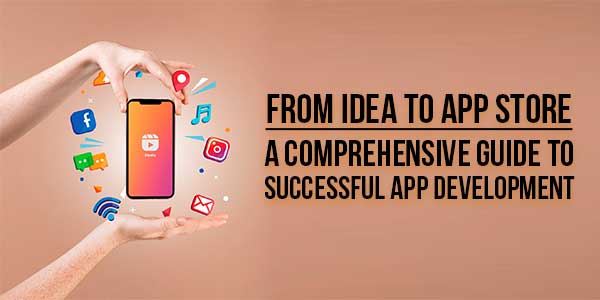
The creation of mobile applications has been on the rise in today’s technological society. You can classify it as anything from enterprise software to a healthcare app with top-tier functionality. More than seventy percent of all smartphone time is spent within applications. Startups, governments, SMEs, and corporations are all paying more attention to mobile apps thanks to the popularity of smartphones, wearables, and tablets.
Everyone, from students to businesspeople, must-have mobile phone access. Because of the dramatic shift happening in the mobile phone industry, there is a pressing need for more and better mobile apps.
Table of Contents
Development Programs For Mobile Devices:
Creating applications for mobile devices like smartphones and digital assistants, most frequently for the Android and iOS platforms, is what mobile app development is all about. The apps can be accessed locally using the device’s web browser or remotely via a mobile app store. Java, Swift, C# and HTML5 are the most popular languages for creating mobile applications.
The need for mobile apps continues to rise across all sectors, including retail, e-commerce, healthcare, telecommunications, insurance, government, and more. It will also facilitate easy, real-time transactions and information access for users. Investing in developing Android and iOS apps, which are in high demand among today’s customers, employees, and partners, is a surefire way to keep your business competitive.
Critical Methods For Making Mobile Apps
A company should first determine its strategy for creating a mobile app before spending any money on doing so. The most well-known methods are:
- Native app development.
- Cross-platform app development.
- Hybrid app development.
- Progressive web app development.
A summary of each follows:
- Native Application:
A native app is designed for and capable of running exclusively on a single platform. To put it another way, if a company wants to make an app available on iOS and Android, it must complete two separate code sets. Costs quickly add up when developing a native app. However, the app performs better and provides a more satisfying experience overall. - Cross-Platform:
A cross-platform program requires only a single code set to function across all supported platforms. The same principle can be used for Android and iOS apps. The platform independence of cross-platform apps makes their development more cost-effective. - Hybrid App:
Hybrid apps combine the best features of both native mobile apps and web apps. Putting a web app inside a native shell is called a hybrid app. These programs are developed in a native container but display web-app-like features once downloaded. These apps are simpler and faster to create, but their reduced complexity may impact their functionality. - Progression Web App:
A progressive web app (PWA) is a website that functions similarly to a native app. The most excellent aspect of PWAs is that they can be used directly in a web browser without downloading and installing any additional software. As a result, PWAs are more efficient, boost user engagement, and use less data.

How An App Gets Made, From Idea To Market
Several stages are involved in developing a mobile app, each contributing to the final product. The first phase is known as the “concept” stage. This is the stage where a person considers the purpose of a potential app and its target audience. The form and function of the app may also enter their minds at this stage. When used, how will it help the customer?
Once an idea has been solidified, the following step is to design a plan. The app’s developers map out the app’s functionality. They consider the app’s features and how users will interact with them. A mockup or sketch of the app’s interface may also be created.
The development phase, sometimes known as the actual creation of the app, follows the planning phase. The app’s functionality is the result of the efforts of software engineers. The app’s features and functionality are developed using mobile app frameworks and languages. Due to the importance of ensuring the app runs smoothly and error-free, this phase might take considerable time.
Testing occurs after the app has been developed. The creators use the software internally to ensure its functionality, and they may also give it to a select set of users to try out in the wild. The testing team reports any problems or faults to the programmers. The software is ready to be released once testing has been completed successfully. When an app is launched, it becomes available for users to download and use.
Developers may keep improving the program even after it goes live during a “support and maintenance phase.” They could update the app to address any issues or add new features. In this step, we make sure the app is always up-to-date and running well.
The lifecycle of a mobile app begins with an idea and continues through planning, creation, testing, release, and finally, maintenance and updates. Developing a cutting-edge app that will impress your target audience is time-consuming, but the payoff is worth it.
Approximately How Long Does It Take To Create A Mobile App?
The time and money required to create a mobile app are proportional to the app’s complexity. The initial release of your app typically takes between three and nine months to develop. While this may seem excessive, remember that not all this time is devoted to writing code. Typical procedures for creating a mobile app consist of the following:
- Development of Project Outline (14 days)
- (in 4-5 weeks) Developer research on the software.
- Layout of the app (around 6-12 weeks).
- Prototyping and development (six to twelve weeks).
- App release (in a few weeks).
After assessing the project’s scope, a skilled mobile app developer should be able to provide you with a reliable quote. However, be wary of businesses that make too many guarantees. For example, if a developer promises a month’s worth of work on your challenging program, they will surely fall short.
Create Android And Ios Apps, But Should You Use Native Code Or A Hybrid Approach?
Careful consideration of the benefits and downsides of both native and hybrid mobile app development is essential in professional software development, especially when aiming at Android and iOS platforms. Native applications, built with platform-specific languages like Kotlin (for Android development) and Swift (for iOS development), provide:
- An unrivaled user experience.
- Exceptional performance.
- Full access to the corresponding operating systems’ most recent features and capabilities.
To fully take advantage of a mobile device’s hardware and software, it’s best to build it with native apps. However, this method requires keeping separate codebases for each platform, which can raise development time and ongoing maintenance costs.
In contrast, hybrid app development uses web technologies like HTML5, CSS, and JavaScript while still wrapped in a native container. Because of this, a single codebase may be used effectively across numerous platforms. Hybrid app development has been simplified thanks to popular frameworks like React Native, Flutter, and Ionic, which have allowed programmers to cut down on development time and cost dramatically. However, it’s worth noting that hybrid apps don’t always live up to the promise of native apps in terms of performance and smooth integration of native functionality.
In Summation:
The field of creating mobile applications is constantly changing and expanding. Building a popular mobile app calls for careful preparation, an intimate familiarity with your intended users, and a dedication to constant refinement.
If you follow the advice in this article, you should have a better chance of developing a helpful app that consumers will love and that will help your company succeed. Remember that providing an excellent user experience while keeping up with the latest trends and technology is the key to mobile app development success. If you take the correct approach and put in some effort, you may make an app that consumers love, and that improves their lives.

 About the Author:MultiQoS Technologies, a premier
About the Author:MultiQoS Technologies, a premier 
















The content is beneficial for me and others. There is a lot of information in the content thank you
Welcome here and thanks for reading our article and sharing your view. This will be very helpful to us to let us motivate to provide you with more awesome and valuable content from a different mind. Thanks again.